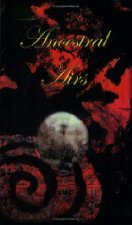
As I was reading this book, I was trying to figure out where to fit it into the categories on this blog. On the one hand, it’s purportedly a reconstruction of a culture 6,000 years old; this includes extensive research into botany, mythology, history and other scholarly studies. But, when you get right down to it, it’s also a fascinating set of stories with well-developed characters, settings, and plots.
Beyond a certain point, we can really know only so much about cultures prior to written history in a region. The stories supposedly tell about the people who lived in the British Isles 6,000 years ago, well before there were any written records; while the author draws from texts about the Celts and other older cultures, these are still newer peoples than what Smedley describes. Whether the people of 4000 BC lived in ways the book described is unknown; nonetheless, the author does a lovely job of weaving together a solid description of her thoughts on the matter, and we get a good picture of what it is they did and believed.
So I chose to primarily read this for its storytelling value. Similarly to my experience of reading MZB’s The Mists of Avalon, it didn’t matter whether the story was literally true or not. I found myself sinking into a world where animism was the central belief, where the plants, animals and other denizens of nature were so important to the people that they took their names from them. I read about the rituals these people performed, as well as the participants’ feelings about them. I witnessed the interactions between individual groups of people, and how they wove into the greater overarching culture of the time. It didn’t really matter whether this was the way things “really happened”; it was a great journey anyway. Even if seen only as a novel, it’s a worthwhile read.
I can’t entirely vouch for the validity of the herbal information; the author knows more about that than I do. A lot of the information about plants peppering the stories dealt with magical uses; however, there were some medicinal uses mentioned as well. For those intrepid enough to backtrack the author’s research, there’s an appendix with the common and Latin names of all the plants (numbering in the hundreds) mentioned. Additionally, she included a thorough bibliography for further research and fact-checking.
This is a book I had to read in bits and chunks over time; at 700 pages, it’s a lot to read! The formatting left a bit to be desired, most notably the complete lack of page numbers which, in a book this length, is frustrating when trying to find where I left off, or where I found a piece of information or a snippet of story I wanted to go back to. Also, I can’t for the life of me find information about the publisher, the owner of the publishing company, or the author.
Ancestral Airs is a thoroughly enjoyable read, regardless of how much salt you choose to take the research with. Whether you choose to read it as I did, in little pieces, or simply spend several hours going from cover to cover in one fell swoop, I hope you like this unique combination of research and narrative.
~reviewed by Lupa
Author: Verda Smedley
Dim Light Books, 2008
pp. 700, $28
